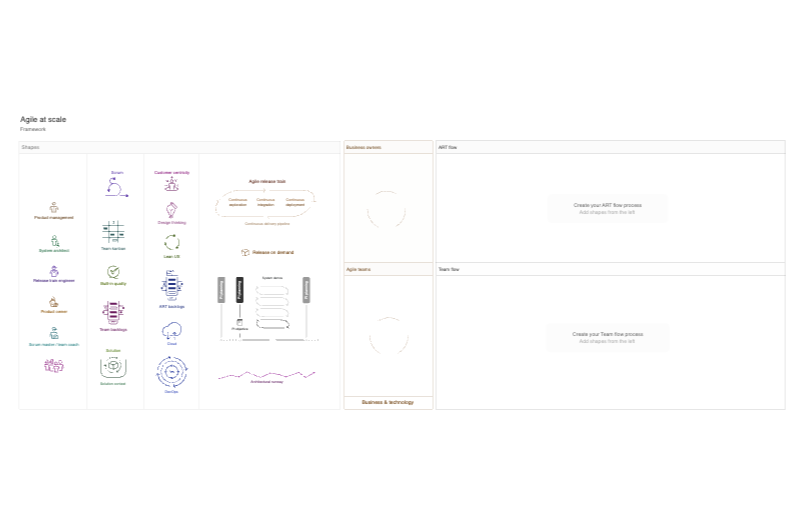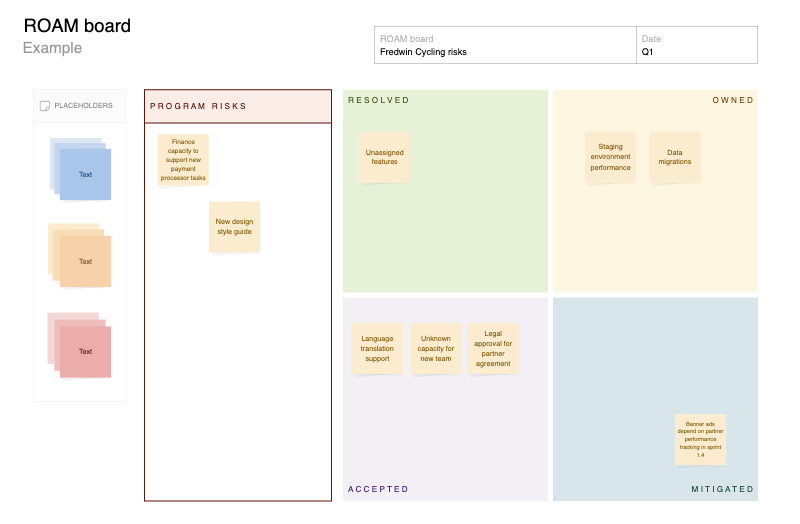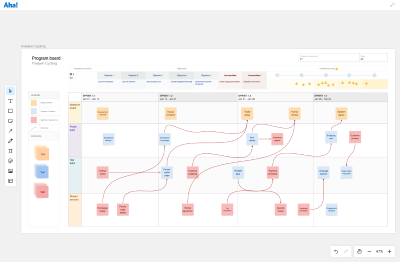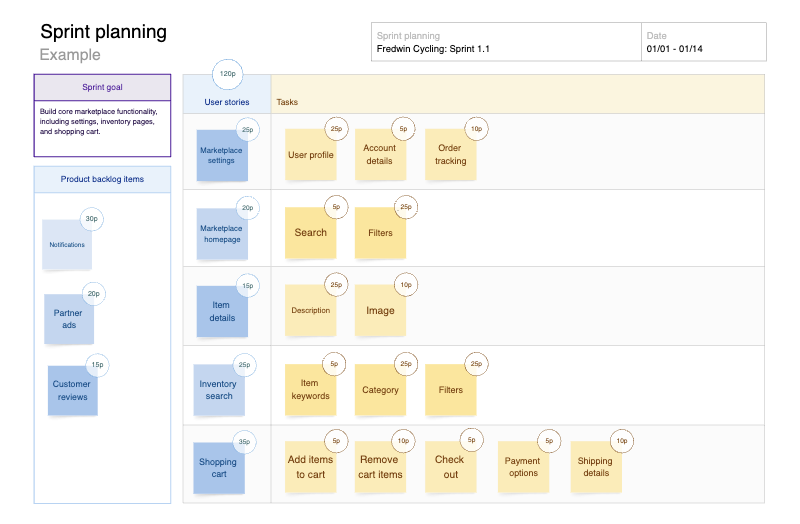SAFe® sprint planning template
Build a realistic sprint plan across teams in the agile release train (ART)
Use template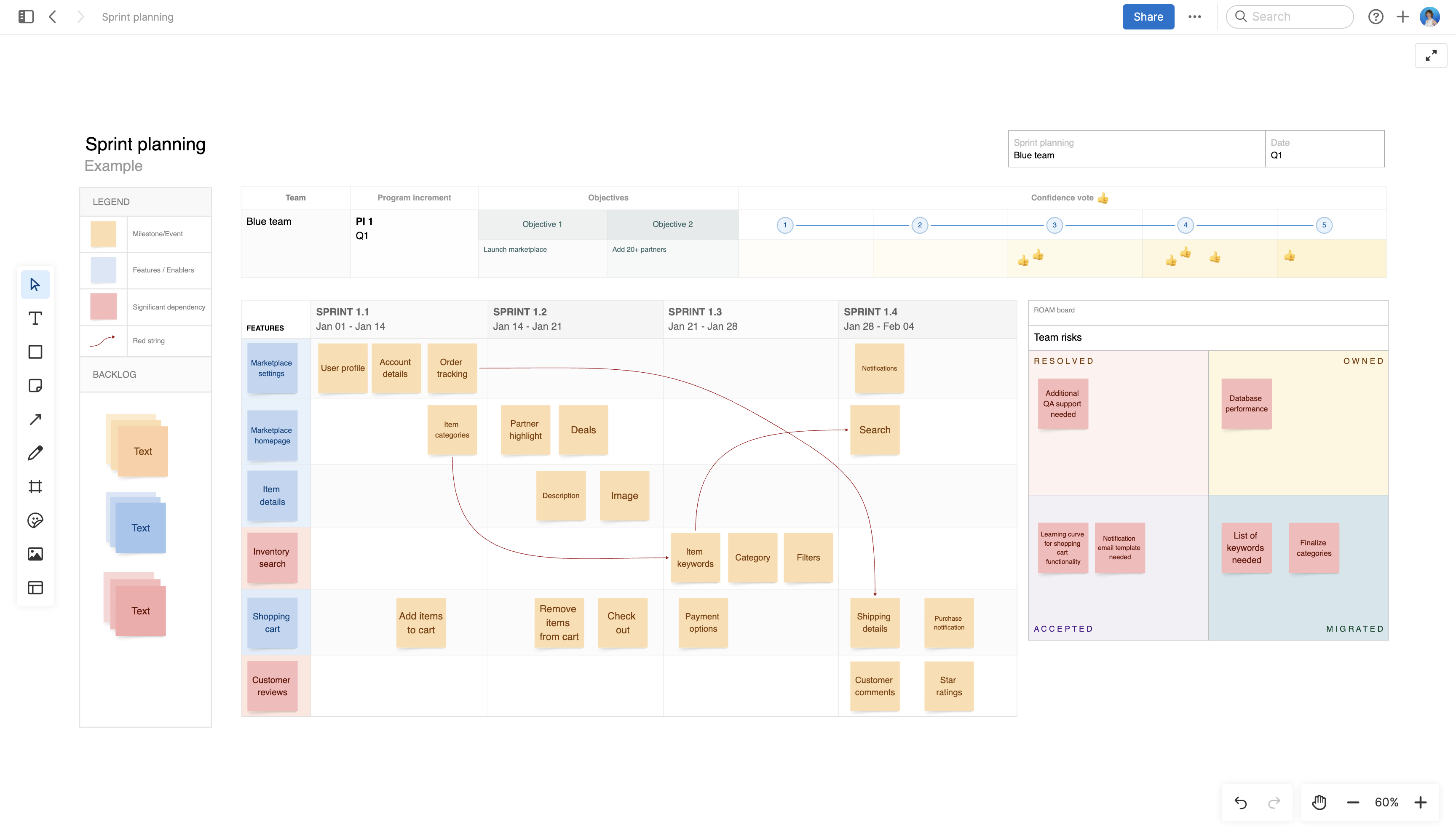
About the SAFe sprint planning template
ARTs can lose momentum when team-level plans are shaky. This template brings structure to the breakout sessions that happen during SAFe program increment (PI) planning. Start by listing your PI objectives and reviewing the backlog of assigned features. Then, break those features into user stories and place them in the appropriate sprints. The layout includes a customizable sprint schedule (often four development iterations followed by one for innovation and planning). Use the dedicated space to track risks, call out dependencies, and adjust the plan before teams commit.
Included in the SAFe sprint planning template
This SAFe sprint planning template includes built-in capabilities such as:
A PI objectives section at the top of the board
Sprint columns representing each iteration in your PI schedule
Swimlanes for placing features and breaking them into stories
A column to capture risks and dependencies
Inline comments and sticky notes for team questions, feedback, and ideas
How to use the SAFe sprint planning template
Use this template during the team breakout sessions in SAFe PI planning. Set up a dedicated sprint planning board for each team in the ART to give everyone space to collaborate. Adjust the sprint columns to match your PI cadence (usually, this is four iterations for delivery plus one for innovation and planning). Add your team's PI objectives at the top to stay anchored in bigger goals.
Review the features assigned to your team. Break each one into user stories and slot them into the right sprint based on effort, timing, and dependencies. Thinking through technical requirements early helps you sequence work more effectively. Once your draft plan is in place, meet with other teams to check for cross-team impacts. Use the final column to capture risks or concerns about scope, architecture, or resources. When the team is aligned, share the plan with the broader ART.
This template is part of a complete SAFe PI planning series that also includes a program board, ROAM board, and retrospective template.
Best practices
Strengthen the team's confidence in delivery.
Sequence work across the entire PI: Look for how features flow from sprint to sprint. If something seems risky or unclear, adjust it now.
Bring in technical leads early: Ask architecture or platform owners to review the plan and flag feasibility issues, especially for shared systems or cross-team work
Match detail to complexity: Some features need deep decomposition; others do not. Let the level of planning reflect how well you understand the work.
Track risks in real time: Add concerns to the ROAM board as soon as they arise. This keeps everyone honest about what might derail delivery.
FAQs about the SAFe sprint planning template
Why is sprint planning in SAFe important?
PI planning sets the overall direction, but sprint planning turns it into a practical path forward. It gives teams a chance to translate features into stories, check feasibility, and adjust sequencing before they commit. And done well, it also prevents surprises mid-PI.
What are some best practices for planning sprints in SAFe?
Use planning time to validate both the work and the sequencing. Ask platform and architecture leads to flag blockers early. Do not try to overplan every detail — instead, match the depth of planning to how well the team already understands the work.
Who is this SAFe sprint planning template for?
This template is designed for agile teams working within a SAFe environment. It is useful for release train engineers, product managers, and scrum masters who need to coordinate sprint-level planning across multiple teams during PI planning.
Is this template free to use?
Yes. To use this SAFe sprint planning template, sign up for a free 30-day trial of Aha! Whiteboards. (You can also try this template in Aha! Roadmaps if you need a complete product management solution.) Easily customize the template to suit your needs, then share it with as many people as you want (for free) to streamline collaboration.

